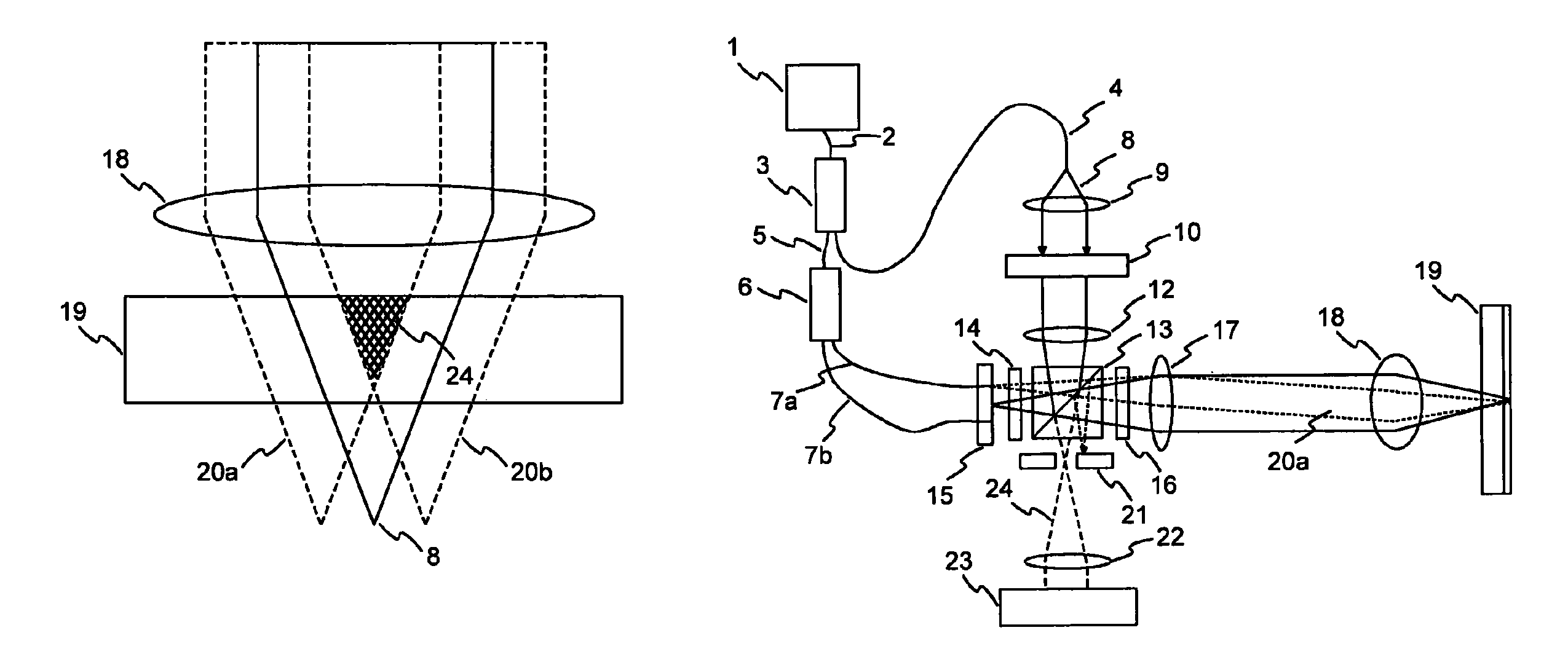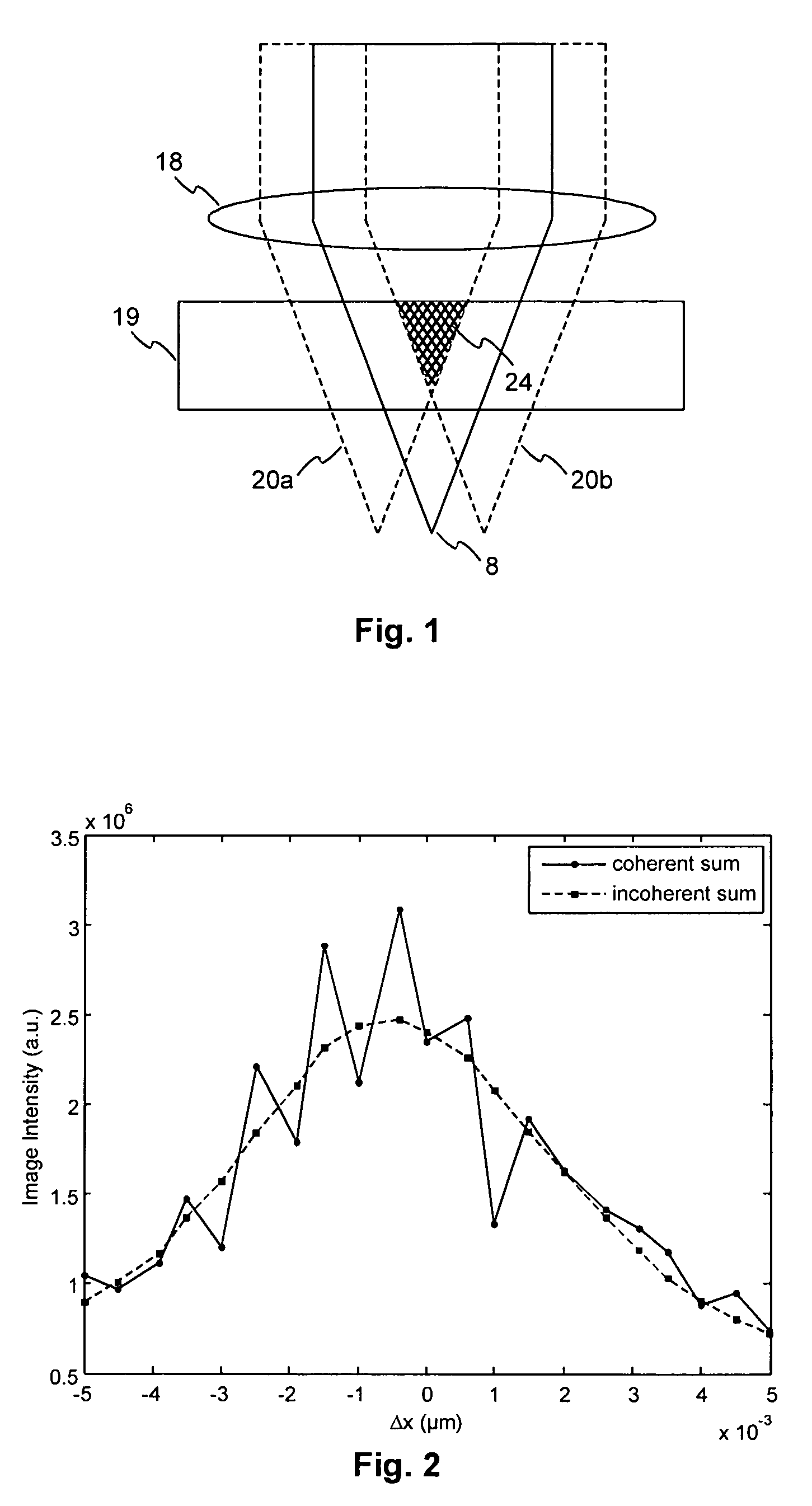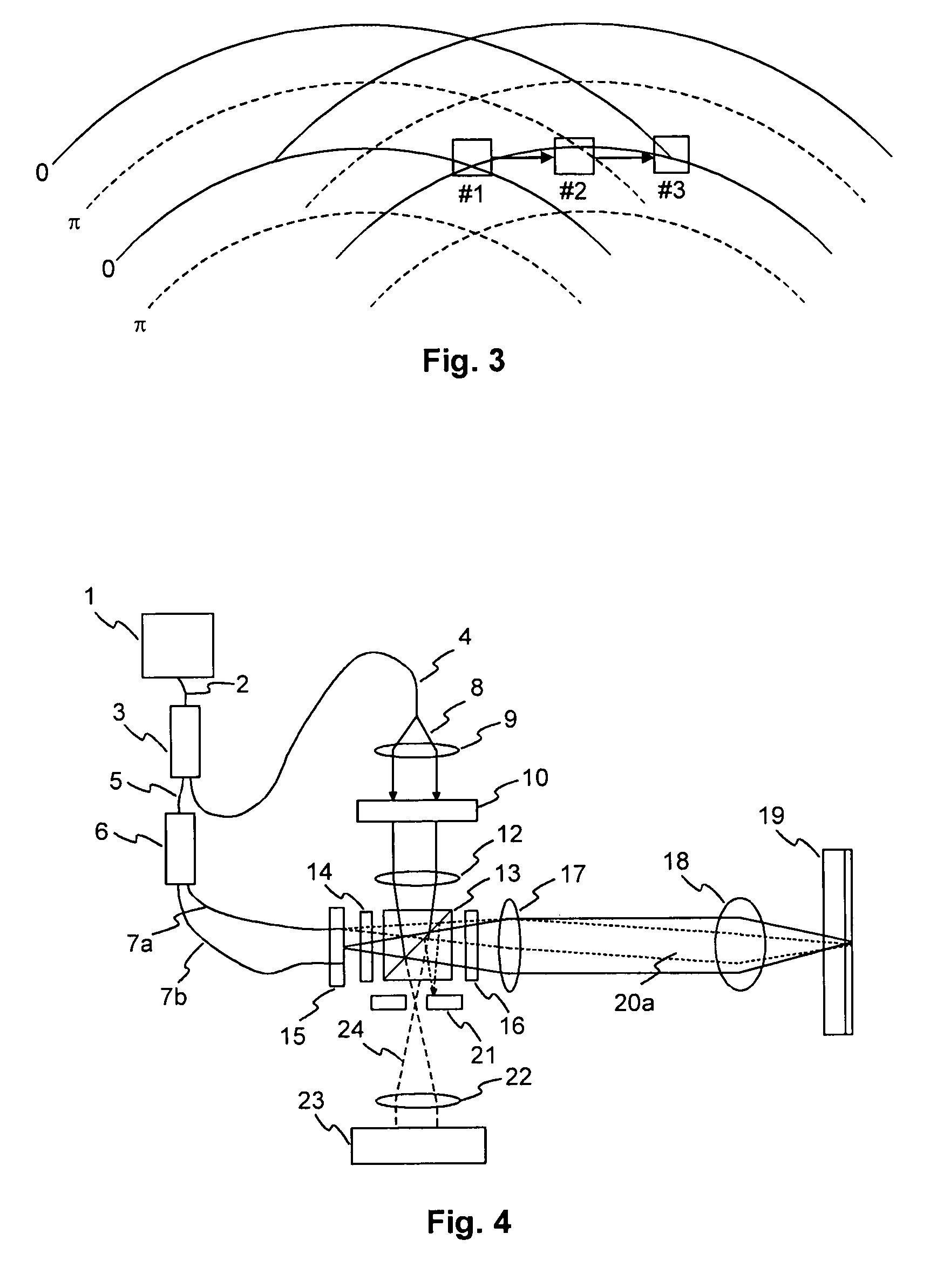Holographic storage system with multiple reference beams
a reference beam and holographic storage technology, applied in the field of apparatus for reading from and/or writing to holographic storage media, can solve the problem of interference pattern in the overlap region of the reference beam overlap
- Summary
- Abstract
- Description
- Claims
- Application Information
AI Technical Summary
Benefits of technology
Problems solved by technology
Method used
Image
Examples
Embodiment Construction
[0028]A simplified example of a known beam arrangement with two coherent reference beams 20a, 20b is shown in FIG. 1. The reference beams 20a, 20b and an object beam 8 are focused into the holographic storage medium 19 by an objective lens 18. In this arrangement the two reference beams 20a, 20b overlap in a central region 24. As described before, during writing the overlap of the reference beams 20a, 20b causes an interference pattern, which may lead to a local saturation of the holographic material.
[0029]The overlap of multiple coherent reference beams 20a, 20b also causes disturbing effects during the reading operation. FIG. 2 shows measurements of the shift selectivity of a hologram written with the beam arrangement described above. The solid curve shows the intensity of a reconstructed data page in case of reading with two coherent reference beams 20a, 20b. The curve exhibits characteristic intensity fluctuations when shifting the material out of the nominal position, where the...
PUM
 Login to View More
Login to View More Abstract
Description
Claims
Application Information
 Login to View More
Login to View More - R&D
- Intellectual Property
- Life Sciences
- Materials
- Tech Scout
- Unparalleled Data Quality
- Higher Quality Content
- 60% Fewer Hallucinations
Browse by: Latest US Patents, China's latest patents, Technical Efficacy Thesaurus, Application Domain, Technology Topic, Popular Technical Reports.
© 2025 PatSnap. All rights reserved.Legal|Privacy policy|Modern Slavery Act Transparency Statement|Sitemap|About US| Contact US: help@patsnap.com



